All Line Plumbing are Sydney Water and Hunter Water accredited and we specialise in the construction and installation of effective stormwater drainage systems on current and new developments in the Sydney and Hunter regions.
Stormwater is rainfall that runs off the land and enters Sydney Water's or your local authorities' stormwater assets which carry the water into creeks, rivers, harbours and oceans. Within NSW, stormwater management is regulated by several authorities and these include NSW EPA, Sydney Water and Local City Councils.
All Line Plumbing are Sydney Water accredited constructors and are authorized to connect your property to the stormwater drainage system to discharge stormwater from your property.
Any construction or building that is located within 10 metres of Sydney Water stormwater assets will require your building plans to be approved through a Water Servicing Coordinator (WSC). Depending on your proposal, you may be required to submit the following reports:
- Services Protection Report (Pegout)
Assets must be accurately located to design the appropriate asset protection requirements. All Line Plumbing are accredited to provide your Sewer Pegout Report. - Flood Impact Assessment Report
This will generally be based off a current flood model, identify any flood hazards, demonstrate that there is no potential for adverse flood impacts and evaluate the impacts of flooding on the proposed development. - Dilapidation Survey Report
A pre-construction and post-construction report identifying any changes that may have occurred during the construction works to the stormwater asset. - Stormwater Deviation Report
It may be required that the stormwater asset be deviated around the proposed structure to allow the asset to be maintained and reconstructed if needed.
All Line Plumbing are Sydney Water constructors and can assist with your stormwater system works.

When and where are stormwater systems built?
The construction of stormwater systems within the Sydney and Hunter regions is a critical aspect of development projects, aimed at managing stormwater runoff and protecting the local environment and waterways. These systems are typically built at various stages and locations depending on the specific project requirements:
- Design Phase: Stormwater system planning starts during project planning. This phase includes comprehensive planning and assessment to determine the requirements and scope of the stormwater infrastructure.
- Pre-Construction Planning: Detailed plans are finalised before construction begins. This involves considering factors such as stormwater connections, on-site detention requirements, and the integration of new infrastructure into the existing catchment area.
- Construction Phase: Actual building of stormwater infrastructure occurs during construction. This includes excavation, installation of drainage pipes, construction of detention basins, and other necessary infrastructure.
- Integration with Development: Stormwater systems are integrated into overall development. This may involve building stormwater infrastructure concurrently with other aspects of the development, such as roads, buildings, and utilities.
- Maintenance and Upkeep: Ongoing maintenance ensures system functionality to ensure proper functioning.
Stormwater system considerations
When constructing a new stormwater drainage system in NSW, Australia, the following should be considered:
- Ensure compliance with Sydney Water and local council regulations and guidelines.
- Incorporate sustainable and eco-friendly stormwater management techniques.
- Plan for regular maintenance to ensure system longevity and functionality.
- Stormwater and wastewater pipes must remain separate to avoid contamination and serious health risks.
Contact us today to get started on your stormwater project and ensure smooth, efficient drainage for your property.
What is a stormwater easement?
A stormwater easement, as defined by Sydney Water and Water NSW, is a legally designated area on private property that allows authorised parties, such as water utilities or local councils, access to install, inspect, repair, and maintain stormwater infrastructure.
In most council areas of Sydney, stormwater easements can be found on private properties, often along property boundaries or within designated areas where stormwater infrastructure is located. They are typically documented in property titles, surveys, and land records maintained by local government authorities or land registry offices.
Property owners retain ownership of the land but must allow necessary access for maintenance and repairs to the stormwater infrastructure within the easement area.
Stormwater easement on your property
Property owners should be aware of the existence and location of stormwater easements on their land to avoid obstructing or interfering with the maintenance of stormwater infrastructure.
If you have a stormwater easement on your property, there are several considerations and requirements that need to be reviewed, such as:
- Obtain Approvals: Before undertaking any construction or development near the stormwater easement, you may need to obtain approvals from Sydney Water and/or your local council. This ensures compliance with regulations and ensures that the integrity of the stormwater infrastructure is maintained.
- Avoid Construction: In general, it's advisable to avoid building permanent structures within the stormwater easement area. This includes fences, sheds, or other buildings.
- Maintain Access: Ensure that the stormwater easement area remains accessible for maintenance and repairs by Sydney Water or relevant authorities. Avoid planting trees or installing landscaping features that could obstruct access to the infrastructure.
- Maintenance Responsibilities: While Sydney Water is typically responsible for maintaining the stormwater infrastructure within the easement area, property owners are often responsible for maintaining the surface area of the easement, including vegetation management and preventing erosion.
- Be Informed: Stay informed about any maintenance or repair activities planned by Sydney Water or the council within the stormwater easement.
It's essential to adhere to Sydney Water regulations and guidelines, as well as any requirements set forth by your local city council, to ensure the proper management and maintenance of stormwater easements and infrastructure while protecting your property interests.
If you're unsure about what activities are permitted within the stormwater easement or how it may impact your property, consider seeking advice from a qualified professional, such as us, All Line Plumbing.
All Line Plumbing are Sydney Water constructors and can assist with your stormwater easement works.

Stormwater easement considerations
- An easement on your property must be maintained and kept clear of debris.
- Generally, no structures or land improvements are permitted within the easement boundaries.
- Stormwater easements are legally designated areas on private properties
Why are stormwater easements necessary?
- To protect Sydney Water's property and other property from damage.
- To ensure access to Sydney Water's infrastructure for maintenance.
- To prevent flooding by allowing water to flow freely.
- To preserve natural drainage patterns.
- To help minimize the risk of waterborne diseases and pollutants entering waterways.






